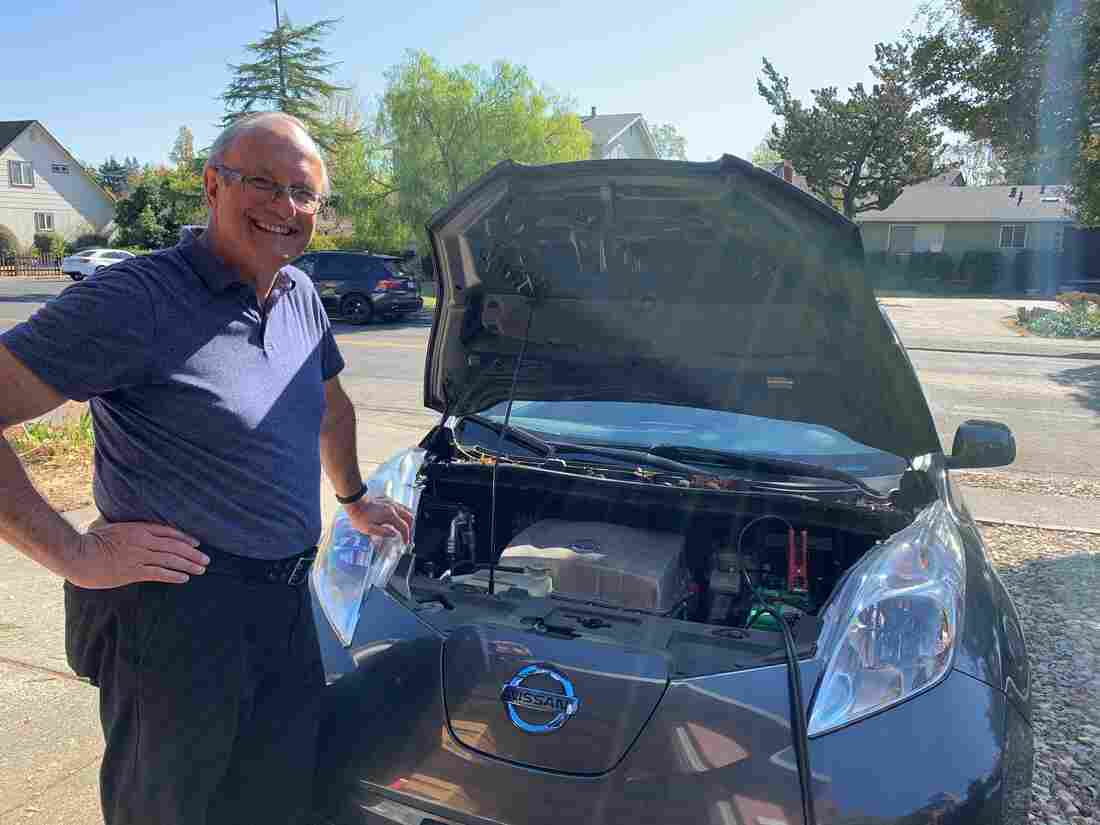Ethane And The Plastics Boom
America’s natural gas boom has also made it the world’s biggest exporter of ethane. It’s a building block for plastics, and U.S. gas is helping fuel the global plastics industry.
STEVE INSKEEP, HOST:
A boom in one industry is fueling another. For years now, the United States has been the world’s largest producer of oil and gas. That has kept natural gas prices low. And to tell you what other industry that helps, I have one word – one word – plastics. Here’s Reid Frazier of StateImpact Pennsylvania and the public radio program The Allegheny Front.
REID FRAZIER, BYLINE: Natural gas is mostly used for heating homes or fueling power plants. But it has another key ingredient you may not have heard of – ethane, a building block of plastics. President Trump brought attention to it a few months ago when he visited the site of a chemical plant Shell is building in Pennsylvania.
(SOUNDBITE OF ARCHIVED RECORDING)
UNIDENTIFIED PEOPLE: (Chanting) U.S.A, U.S.A, U.S.A.
FRAZIER: This plant, like a number of others being built in the U.S., will convert some of the region’s ethane into plastic. Trump told workers this was bringing the country big economic benefits.
(SOUNDBITE OF ARCHIVED RECORDING)
PRESIDENT DONALD TRUMP: American manufacturing. And we are reclaiming our noble heritage as a nation of builders again.
(APPLAUSE)
TRUMP: Nation of builders.
FRAZIER: But there’s so much natural gas and ethane that chemical plants in the U.S. can’t use it all. Turns out, this has been a lucky break for the European chemical company Ineos. In 2011, its own supplies of ethane from the North Sea were running low, says Warren Wilczewski, an economist with the U.S. Energy Information Administration.
WARREN WILCZEWSKI: Ineos looked at the United States where ethane supply was growing and where – especially in the Appalachian region, that ethane had, like, no place to go. And they recognized an opportunity.
FRAZIER: Ineos commissioned a fleet of ships, the first ever to carry ethane by sea, to move shale gas from a port near Philadelphia to plants in the U.K. and Norway. Ineos officials did not agree to an interview for this story, but here’s CEO Jim Ratcliffe in a company video.
(SOUNDBITE OF ARCHIVED RECORDING)
JIM RATCLIFFE: I think for some of these assets in Europe, it’s the only way they can survive. If we can bring some of the U.S. economics across to Europe…
FRAZIER: The U.S. has quickly become the world’s leading exporter of ethane, feeding growing plastics industries in India and China. And those exports are expected to keep growing. Back in 2016, it was big news when U.S. methane arrived in Scotland.
(SOUNDBITE OF ARCHIVED RECORDING)
UNIDENTIFIED BBC REPORTER: It is the first delivery for Ineos of shale gas into the U.K. It’s arriving at Grangemouth later this morning.
FRAZIER: And Grangemouth is home to Scotland’s biggest petrochemical plant and refinery.
KEVIN ROSS: You can see some of the flares down there, operating some of the silo towers across there, and some of the many cooling towers that are actually onsite.
FRAZIER: Kevin Ross is president of the Scottish Plastics and Rubber Association and runs a local plastics testing company. He says American shale gas has allowed Ineos to restart one of its production units. The plant is now running at full capacity. That’s not just good for the 1,300 people who work there, but for the suppliers and contractors, like him.
(SOUNDBITE OF PLASTICS LAB MACHINES WHIRRING)
ROSS: Watch your feet.
FRAZIER: At the nearby lab where his company tests plastic materials, he shows me what looks like a glossy plastic pipe.
ROSS: Almost certainly, because of what it’s made of, it’s either nuclear, pharmaceutical or military – almost certainly – because it is so expensive.
FRAZIER: So it’s a pipe?
ROSS: It is a pipe on steroids. It is a very high-performance pipe.
FRAZIER: Ineos got hundreds of millions of dollars in loan guarantees from the U.K. to retrofit the Grangemouth plant for American shale gas. But it’s also pushed for its own local supply. It wants the U.K. to allow fracking, the controversial technology that breaks up rock deep underground to get oil and natural gas. And that plan was met with intense opposition. Norman Philip, with Friends of the Earth Scotland, opposed fracking because of what he’d heard about it from communities in the U.S. and Australia.
NORMAN PHILIP: People were telling us of gas leaks. They were telling us of, like, children having headaches, and there was a toxic element of it.
FRAZIER: The pushback has resulted in an ironic twist to this story. In 2015, Scotland put in place a moratorium on fracking, and the U.K. government recently did the same. So fracking is illegal in Britain, even though it’s still legal to import shale gas produced by fracking in the U.S. Lee Sinclair is a railroad engineer at the Grangemouth petrochemical plant. He has mixed feelings about this.
LEE SINCLAIR: I think it’s a good idea, just the fact that we’re getting gas from somewhere. And the only thing I don’t like about it is Scotland said, no, well, you’re not fracking here. So they decide to go to America to get his gas.
FRAZIER: He’d rather the U.K. get a local supply. But for now, he says, America’s boom in gas and ethane is helping him keep his job. For NPR News, I’m Reid Frazier in Grangemouth, Scotland.
Copyright © 2019 NPR. All rights reserved. Visit our website terms of use and permissions pages at www.npr.org for further information.
NPR transcripts are created on a rush deadline by Verb8tm, Inc., an NPR contractor, and produced using a proprietary transcription process developed with NPR. This text may not be in its final form and may be updated or revised in the future. Accuracy and availability may vary. The authoritative record of NPR’s programming is the audio record.







